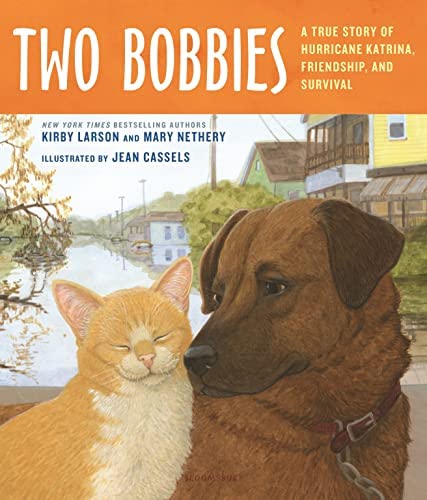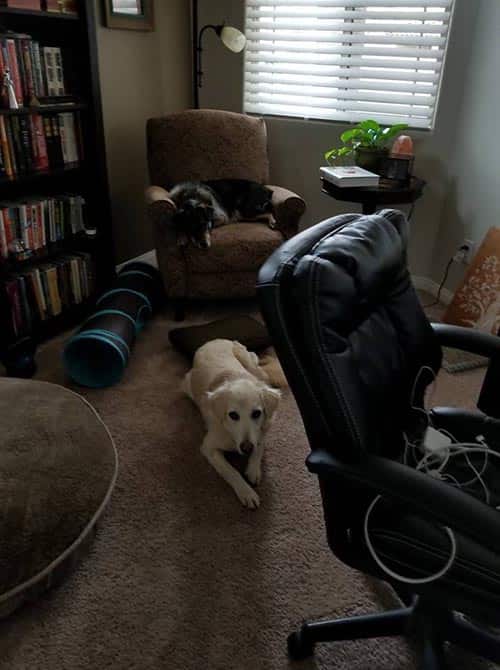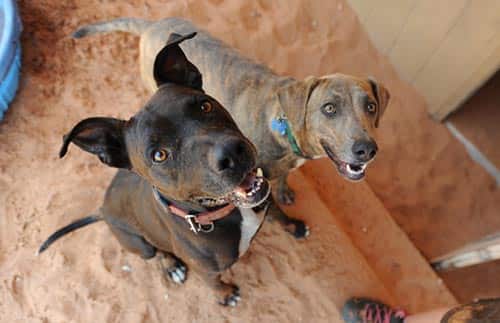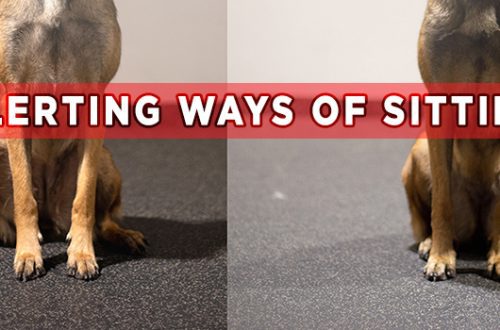
Friendship Between Dogs: Two True Stories of Mutual Aid
System ToolsDogs provide physical or emotional support to many people. What about pets who suffer from severe anxiety, lack of social skills, or physical disabilities such as blindness and need help too? Service dogs, used to support other dogs, play a huge role in helping them navigate their own world. Without extra help, four-legged friends with special needs sometimes have a very difficult time. Here are two real stories about animals helping each other.
Chama and Cardinal

“Chama, a herding mix, was admitted to Best Friends Animal Sanctuary less than a year ago after he started having problems with his family’s children,” said Julie Tash, manager of Best Friends Animal Society’s Dogtown Sanctuary in Kanab, State. Utah. “He was placed in a group with two other dogs, one of which was called Cardinal. Cardinal, a golden retriever mix, arrived at the shelter a little earlier than Chama and was completely wild. He was not leash trained, refused to get into a car and was afraid of people, but he also loved other dogs.”
None of this meant that he was completely hopeless. “Chama immediately became a great role model for Cardinal because he loved walking, driving and people,” says Tash. “At first, he was taken care of by the workers of the shelter, but with the advent of his friend Chama, Cardinal fell in love with him so much that he was ready to try doubly if Chama was around.”
After a while, the shelter staff began taking Cardinal and Chama to an agility area called the Tara Track to teach Cardinal the joys of exploring the world on a leash.
“Chama was on a leash with one of us like a champion, and we decided to start with a spring leash for Cardinal, allowing him to walk and move more or less freely,” says Tash. “Tara’s course is a great place, because if at some point the Cardinal started to panic, we could safely let him off the leash to calmly continue classes, since we were in a fenced area. The cardinal saw Chama walking on a leash and began to realize that it was actually fun and not at all scary.”
Service dogs are just as important for the emotional support of other dogs as physiotherapy pets. Without Chama, the Cardinal may never have been able to acquire the skills needed to live comfortably in the home and grow emotionally. Tash continues: “We trained for a couple of weeks and then we finally went for a walk together. We walked the trail with Chama and Cardinal and it was like magic. The Cardinal was so happy to be in a new place and have fun with his best friend.”
Recently, a married couple came to Dogtown, who planned to pick up Chama. Tash says: “He was the first and only dog they wanted to meet. They loved him so much that they asked if he had any friends at the orphanage, and we said, “Yes, his friend Cardinal.” The cardinal, of course, did not immediately approach these people, but gradually approached and in the end nevertheless took the treat from their hands. They realized that he was shy and that his training at home would require a lot of time and effort, but they were so fascinated by these dogs that they took Chama and Cardinal together!
Chaplin and Cordelia
Friendship in the world of dogs is just as important as in the world of people. When it comes to choosing friends, animals don’t need help. In “Dogtown” there is another pair of dogs that socialize relatives. Their leader’s name is Chaplin. Tash says: “Chaplin was not asked to help Cordelia, but he was encouraged to be himself and do whatever he wanted, and that confidence and support was transferred to Cordelia.”
Through their relationship, Cordelia has become more confident and independent. In fact, they are one of those pairs of friends who practically do not need anyone else. Tash explains, “They live together, so other dogs don’t really get involved in their relationship that much.”

“Chaplin rode golf carts and cars so confidently,” she continues, “that Cordelia began happily jumping into cars and enjoying the ride too—provided Chaplin was with her!”
For Cordelia, this was a significant change. “Years of walking with Chaplin, accompanied by a shelter worker and Cordelia, accompanied by a volunteer, helped Cordelia gain confidence that she could walk with volunteers alone and still interact with them,” says Julie Tash.
Service dogs that help other pets don’t have to go through the same lifelong training that people help dogs do. However, they are no less dedicated to their cause and are happy to help their fellows to achieve success.
See also:
- Two dogs in the house: pros and cons
- Are dogs capable of jealousy and feeling injustice?
- Interesting facts and myths about dogs





